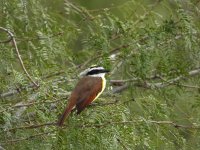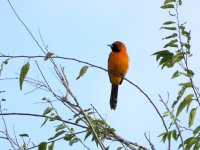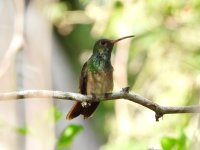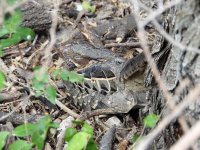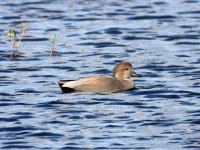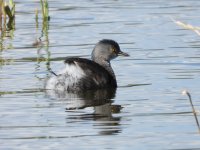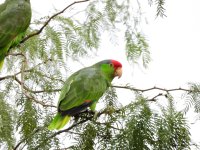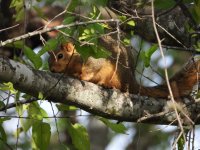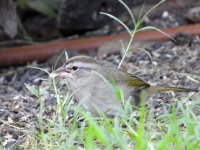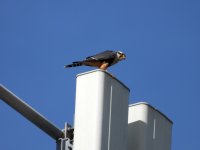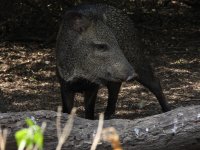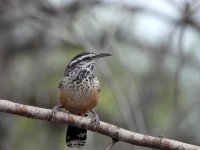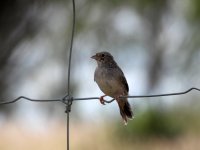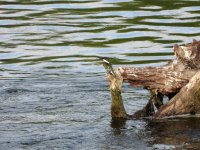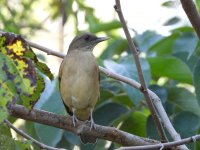lgonz1008
Well-known member

When it comes to birding within the US, few places rank as high as the Lower Rio Grande Valley in South Texas. The region is home to over 30 species that regularly make it across the Rio Grande into the US, but it also has the potential of many vagrants, and during winter, the species variety is boosted with many species looking for a comfortable winter home. The trip in question was made by a friend and me and outside of have a guide to enter private property for a special target, the birding was done exclusively by us and it was extremely easy and enjoyable. The overall trip total gave us 179 species, of which, 26 were prime targets of the region.
Some minor notes, we visited the area a week prior to the Lower Rio Grande Valley Birding Festival, this meant that in a couple of places, the feeders were just starting to be put up and the influx of reported rarities wasn't as high as it is for trips after the festival. The region is extremely flat and most areas are paved, so driving is extremely easy, even in a low-clearance vehicle, the food and gas was probably some of the cheapest you can get in the US while going on a big birding hotspot, and finally, most of the sites and refuges have odd hours of opening at 8 and closing at 5, this usually meant that you either have to wait for the main trails to open by birding the parking areas or pay on the way out of the site.
Detailed Itinerary:
Some minor notes, we visited the area a week prior to the Lower Rio Grande Valley Birding Festival, this meant that in a couple of places, the feeders were just starting to be put up and the influx of reported rarities wasn't as high as it is for trips after the festival. The region is extremely flat and most areas are paved, so driving is extremely easy, even in a low-clearance vehicle, the food and gas was probably some of the cheapest you can get in the US while going on a big birding hotspot, and finally, most of the sites and refuges have odd hours of opening at 8 and closing at 5, this usually meant that you either have to wait for the main trails to open by birding the parking areas or pay on the way out of the site.
Detailed Itinerary:
- November 1-2 (Flight to San Antonio and transfer to McAllen)
The trip began with an overnight flight to San Antonio and without any difficulties or delays, we arrived on the hotel to spend the night. The next morning, we booked our car rental and managed to hit our first stop in the Mitchell Lake Audubon Center. The wetlands are a famous wintering site for American White Pelican, but the walking trails held most of our favorite targets of the morning, these included Inca Dove, Verdin, Pyrrhuloxia and mixed sparrow flocks that included standouts like Green-tailed Towhee, Vesper, White-throated and White-crowned Sparrow. The wetlands had a few Long-billed Dowitchers and Western Sandpipers, while the retention ponds had large numbers of Northern Shoveler with a few waterfowl species thrown in the mix for variety. After a delicious lunch in a nearby Mexican restaurant, we began the long drive south towards Brownsville.
From the road, we were able to pick out a few species, including Western Meadowlark, Red-tailed, White-tailed and Harris's Hawk. Our destination at the end of this drive was the famous Oliviera Park in Brownsville, this urban park is home to hundreds of parrots that come in daily for roosting. While the purist might prefer to see these species in their native habitat, some of these birds are actually doing better in South Texas than their home in Northern Mexico, so this might be as good a stronghold for the species as any other. The main target was also the most common, the Red-crowned Parrot, of which was encountered flocks in the hundreds, mixing with these flocks, were also a couple dozen White-fronted and Red-lored Parrots. The cacophony in the park was supplemented by the thousands of Great-tailed Grackles that competed with the parrots for trees to roost. Once we had our fill of the parrots, we drove north for our base of operations for the next few days, McAllen.





